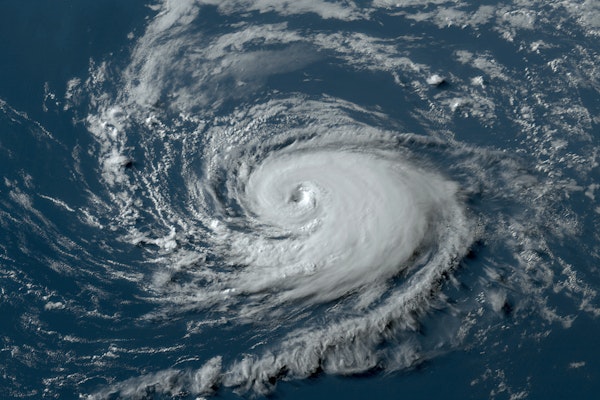
Homebuyers Shift Search Strategies As Homeowners Insurance Costs Rise And Access Challenges Grow
A new Realtor.com survey shows rising homeowners insurance costs are influencing homebuyers’ decisions, with many adjusting search strategies or considering dropping coverage.
September 12
Catastrophe
Insurance Industry
Property
Risk Management

Federal Disaster Aid Approvals Are Taking Longer And Delaying Recovery Efforts
A new AP analysis shows presidential disaster declarations now take weeks longer than in past decades, leaving survivors and local governments waiting for critical aid.
September 12
Catastrophe
Legislation & Regulation
Property
Risk Management

Insurance Underwriters Prepare for AI-Driven Transformation in Risk Management
A survey of 430 underwriting executives reveals AI adoption will surge from 14% to 70% in three years, reshaping efficiency, risk assessment and workforce strategy.
September 12
Insurance Industry
Risk Management
Technology
Underwriting

FTC Launches Inquiry into How AI Chatbots Affect Children’s Safety and Well-Being
The FTC is examining how AI chatbots may impact children, seeking answers from tech giants on safety measures, content monitoring, and potential risks to minors.
September 12
Legislation & Regulation
Life & Health
Risk Management
Technology

Why the Atlantic Hurricane Season Has Suddenly Gone Quiet in September
Despite reaching the statistical peak of hurricane season, the Atlantic basin is unusually quiet this September, with no active storms and limited tropical development expected.
September 10
Catastrophe
Insurance Industry
Property
Risk Management
Florida
Georgia
North Carolina
Tennessee
Texas

How Construction Companies Can Prevent Common Builders Risk Claims
Construction projects face risks from theft, weather, fire, and more. Proactive site safety measures can reduce losses and keep projects on track.
September 9
Catastrophe
Insurance Industry
Property
Risk Management

High Insurance Costs and Climate Risks Push Homeowners in Vulnerable Areas to the Brink
A new Realtor.com report reveals that 1 in 4 U.S. homes face extreme climate risk, with surging insurance costs disproportionately impacting low-value, high-risk markets.
September 9
Catastrophe
Insurance Industry
Property
Risk Management

Pennsylvania Man Accused of Running $400 Million ATM Investment Scam
Federal authorities charged a Pennsylvania man with securities and wire fraud after allegedly defrauding investors through a fake ATM investment scheme worth over $400 million.
September 4
Fraud
Legislation & Regulation
Litigation
Risk Management
New Jersey
Pennsylvania

NOAA Launches First Hourly Wildfire Risk Model to Improve Forecasting and Response
NOAA’s new Hourly Wildfire Potential Index offers hourly wildfire hazard forecasts, helping responders and forecasters better track fire activity and smoke emissions in real time.
September 2
Catastrophe
Property
Risk Management
Technology

Arkansas Builder Sues Zurich Over Denied Collapse Claim on Unfinished Home
A $420,000 dispute over a collapsed Arkansas home under construction challenges Zurich’s interpretation of "collapse" coverage in commercial property policies.
September 2
Litigation
Property
Risk Management
Arkansas

Verisk Projects $152 Billion in Annual Global Property Losses from Natural Disasters
Verisk’s 2025 report reveals global insured property losses from natural catastrophes have surged to $152B annually, driven by more frequent storms and wildfires.
September 2
Catastrophe
Insurance Industry
Property
Risk Management

Why Food Companies Must Treat Recall Preparedness as a Business Essential
Food recalls can escalate into costly crises without proper planning. Learn how supply chain mapping, business continuity, and mock drills can make or break your response.
September 2
Insurance Industry
Liability
Property
Risk Management

How Warehouse Technology is Reshaping Risk Models in Insurance
Connected automation in warehouses is forcing insurers to replace outdated models with dynamic, real-time risk assessments based on sensor data and machine performance.
September 2
Property
Risk Management
Technology
Underwriting

How a $100 Billion Hurricane Could Strike the US and What Insurers Need to Know
Major U.S. metro areas are increasingly vulnerable to $100 billion hurricane losses. This KCC report shows where it’s most likely and how insurers can prepare for the next big one.
August 29
Catastrophe
Insurance Industry
Property
Risk Management
Connecticut
Florida
Louisiana
Massachusetts
New Jersey

US Cyber Insurance Premiums Decline for the First Time Since 2018
US cyber insurance premiums fell 2.3% in 2024, signaling a market shift as carriers focus on underwriting discipline and sustainable growth amid evolving cyber risks.
August 29
Insurance Industry
Risk Management
Technology
Underwriting





